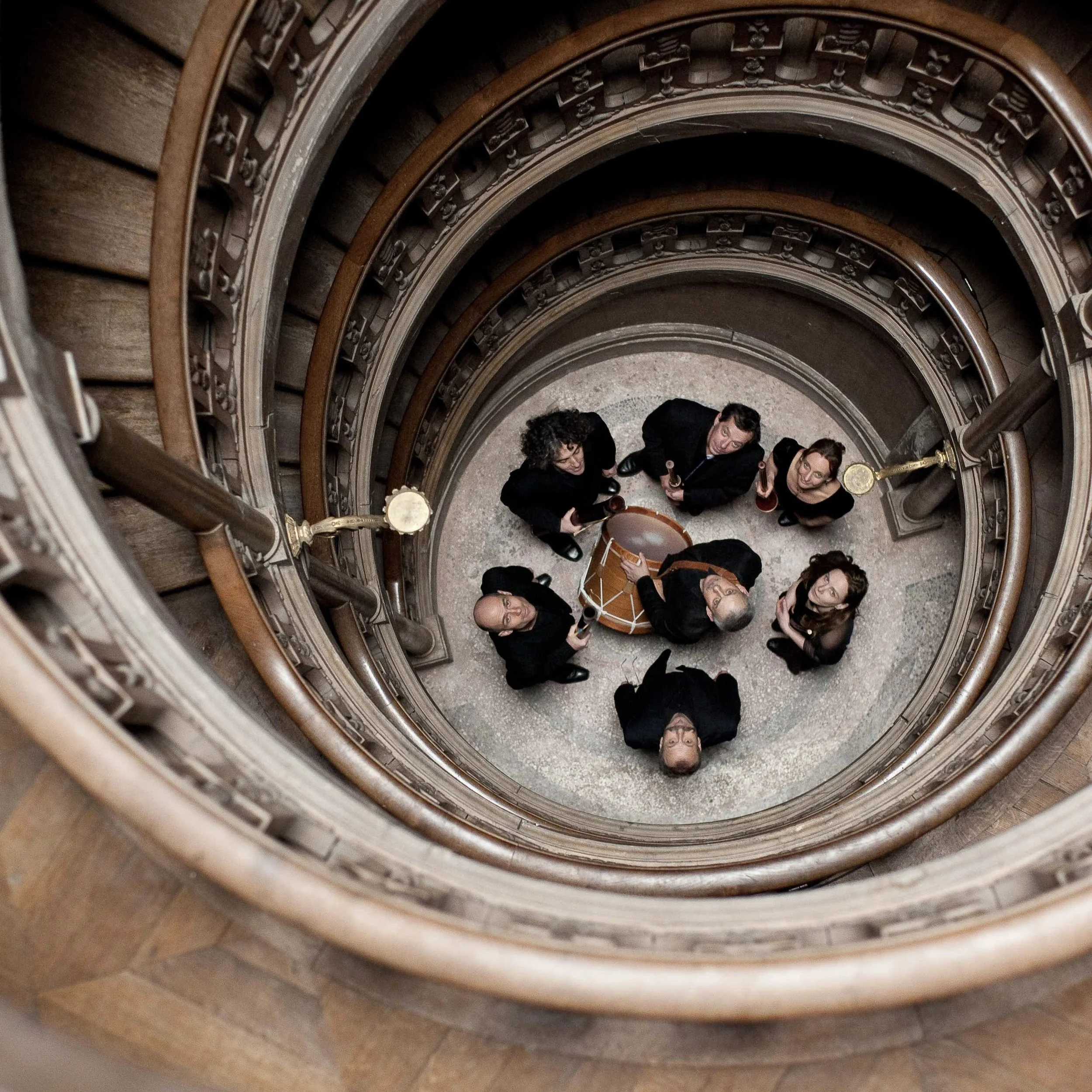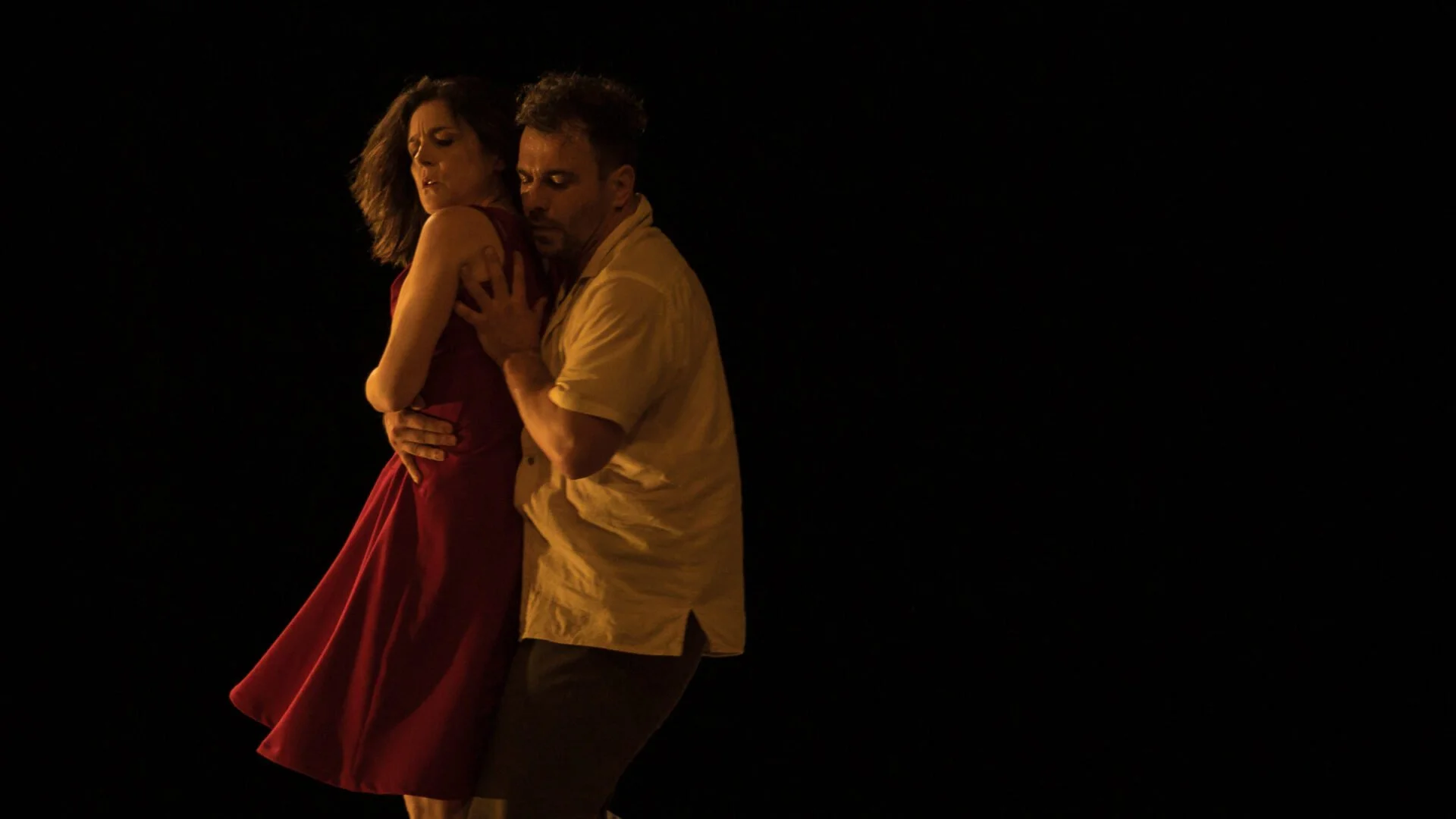Dance review: Rachel Meyer builds another off-kilter world of wonder in Mama, do we die when we sleep?
Stacks of chairs, a strange blue dress, and an echoing lullabye
Stéphanie Cyr and Calder White in Mama, do we die when we sleep? Photo by David Cooper
WHEN FORMER BALLET BC artist Rachel Meyer stages a production, she doesn’t just choreograph a dance—she conjures an entire world.
That was true of her haunting Transverse Orientation, a dark and eerie universe populated by mothlike creatures mounted as part of Dancing on the Edge 2018. Set at midnight and located in a transformed industrial warehouse in Railtown, it took you to another nocturnal realm.
Now Meyer is back with an equally ambitious work—both visually and kinetically—that turns Russian Hall into a sort of surreal playground for four dancers.
Just how she and fellow magnetic performers Josh Martin, Stéphanie Cyr, and Calder White created something of this scale and breadth during a pandemic is another question; suffice it to say this is the most elaborate, immersive experience you’re going to get at Dancing on the Edge, which wraps up this weekend. As with her previous piece, there’s a constant feeling you might be somewhere in an underground theatre in Kreuzberg or Greenwich Village instead of East Van.
The audience sits up on the stage on bleachers to look down on the action on the floor, where a crazy mountain of wood chairs sits askew at the back of the stage, a step ladder open in the middle of the floor.
Inspired by a real question from Meyer’s two-year-old daughter, Mama, do we die when we sleep? is set to the echoing refrains of a Chopin lullabye—a fact that underlines the theme of childlike wonder and imagination, and the way it shrinks and conforms as we age.
Rachel Meyer shapes and reshapes a blue, gauzy dress. Photo by David Cooper
The action is off-kilter, following a kind of dream logic. Martin sits tipping off balance on his chair; White collapses over and over on the floor. Martin and Cyr later have a beautifully awkward duet, Cyr climbing up the backs of his ankles and calves as he tries to move forward, or rolling over and over him.
One of my favourite things that Meyer does as a choreographer is insert herself into the work, reminding us that this strange universe is moulded specifically from her point of view—just as she did in Tranverse Orientation. Here she enters the stage to reorganize the chairs—in one extended, almost slapstick sequence with White, fighting over control of them—or climbing the ladder to hang a giant, gauzy midnight-blue dress from a hanger dangling from the ceiling. A bit like a puppetmaster, she even adjusts Martin’s hand at one moment.
As the piece progresses, the surreal hanging frock becomes an instrument for experimentation, Meyer donning it to perform a graceful yet clumsy dance, her feet trapped in its gauze, and Martin and Cyr later shape-shifting inside it, turning it into different, eerily backlit sculptures.
There’s a lot going on in the piece (and it’s a long work, complete with an intermission). While individual dancers perform repeated tasks—rearranging and stacking chairs, wiping the floors with blue cloths, taking off and putting on a suit jacket—others move in hallucinatory ways across the stage. In one sequence, Cyr slides backward across the entire floor, arms pushing as legs slither and undulate ahead. There’s a driving momentum and flow to the weird rhythms of the work. Meyer continues to prove herself a choreographer to watch, with big ideas and a knack for innovative, often unearthly movement.
What does it all mean? The tasks seem to represent human conformity, the other movement and the surreal imagery the possibility of unfettered imagination. But this is a work best experienced on its own, haunting plane—by immersing yourself in her world, and by being glad you are able to travel there once again.















